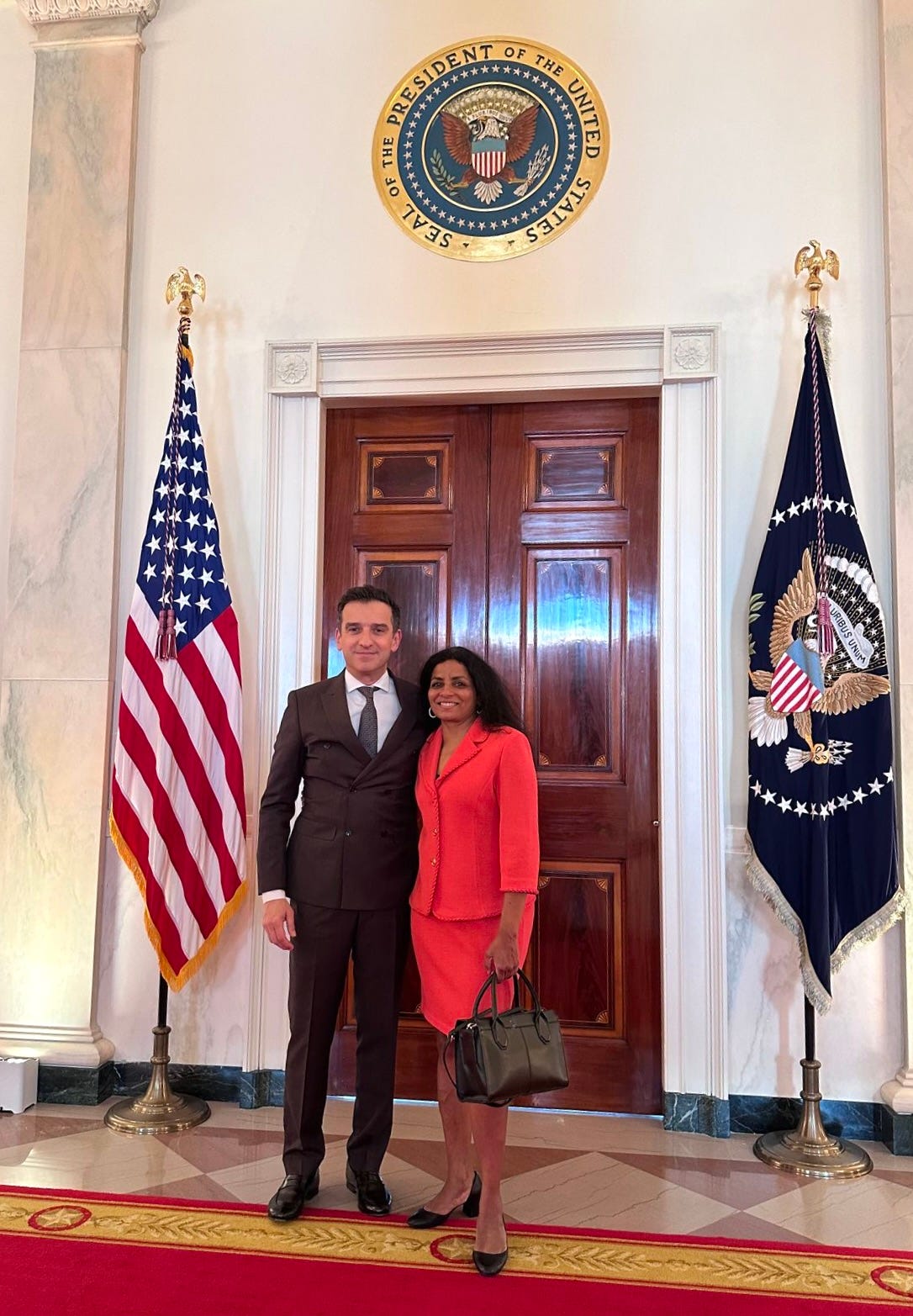The Next Chapter in AI
A Strategic Blueprint for American Leadership
Hello, I'm Ylli Bajraktari, CEO of the Special Competitive Studies Project. In this edition of our newsletter, I’m sharing my thoughts on the Executive Order from the White House on "Safe, Secure, and Trustworthy Development and Use of Artificial Intelligence."
Last week, we shared new opportunities to join the SCSP team. Apply, share with your network, and continue to be a part of our important work. Thanks for following and believing in the mission.
In an era of rapid technological advancement, the United States finds itself in a competition, notably with China, for supremacy in the transformative field of artificial intelligence. Our leadership in this domain will have profound implications for economic prosperity, social benefits, and national security throughout the century.
I started working on this issue five years ago as the Executive Director of the National Security Commission on Artificial Intelligence (NSCAI). At the time, there was a broad sense in Congress of two trends - the importance and implications of AI as a technology, and the rising fear of China’s status as a global leader in AI. Over the next couple of years, NSCAI concluded that the government was not organized or resourced to win the AI competition and the nation had to be AI-ready by 2025. Two years ago, we started the Special Competitive Studies Project (SCSP) to continue this mission and develop recommendations to establish U.S. leadership in AI and other key technologies. The introduction of large language models (LLMs) has created enormous opportunities, but also introduced new questions.
The recent Executive Order released by the White House on the "Safe, Secure, and Trustworthy Development and Use of Artificial Intelligence" serves as a landmark in this competition. It is not merely a policy directive but a carefully calibrated strategy that underscores America's resolve to lead in AI.

As Winston Churchill once said, "Now this is not the end. It is not even the beginning of the end. But it is, perhaps, the end of the beginning." As we move forward in this chapter, leadership in AI must be holistic, marrying technological prowess with the foundational principles of democracy. This pivotal document provides the foundation for our continued innovation and ethical leadership in AI. This strategy serves as a framework not just for the United States, but as an invitation for like-minded democracies to join us in shaping the future of AI and its impact on the world.
Organizing the federal government is a crucial step in the techno-economic competition with China. The newly established White House AI Council is a prime example of institutional foresight, coordinating our country's AI initiatives across various governmental agencies. It will serve as the central organizing body to drive top-down implementation of the AI Executive Order, by setting the pace and ensuring alignment with national objectives and democratic values.
In addition, attracting, training, and retaining world-class AI talent is vital in this competitive landscape. This is not a new issue. NSCAI recommended that America should create fast track pathways for highly skilled AI professionals so that the United States can remain a global magnet for talent. Legislation must accompany the vision in the Executive Order to fully realize its potential.
Moreover, the innovation ecosystem is critical to maintaining our competitive edge. Here, the National Science Foundation (NSF) plays a pivotal role. To build this ecosystem, Congress should allocate targeted funding to NSF, particularly for the National AI Research Resource. Such investment would stimulate advancements in technology, ethical governance, public-private partnerships, academic research, and entrepreneurial ventures.
The dual-use nature of AI, capable of both immense good and potential harm, is prudently addressed in the Executive Order. A flexible governance framework, buoyed by the National Institute of Standards and Technology’s AI Risk Management Framework, situates the United States as a leader in AI ethics and risk management, essential attributes in this global competition. Such governance provides a cornerstone upon which international frameworks and partnerships can be constructively built to manage shared AI risks while capitalizing on its benefits. While the Executive Order is a crucial first step, its success will be determined by bipartisan action and commitment across successive U.S. administrations. SCSP recently released a High Consequence AI Use Cases (HCAI) framework that can contribute to this directive. As we vie for AI leadership on the world stage, this bipartisan resolve becomes not just beneficial, but imperative.
The Executive Order sets a robust agenda that reflects both our technological ambition and ethical considerations. It sends a clear message to our competitors and allies alike: America is committed to leading the AI revolution while upholding the democratic principles that define us. As we advance, let Churchill's wisdom remind us that this is not an end, but a promising start — a cornerstone for a future harmonizing technological progress with human values.




